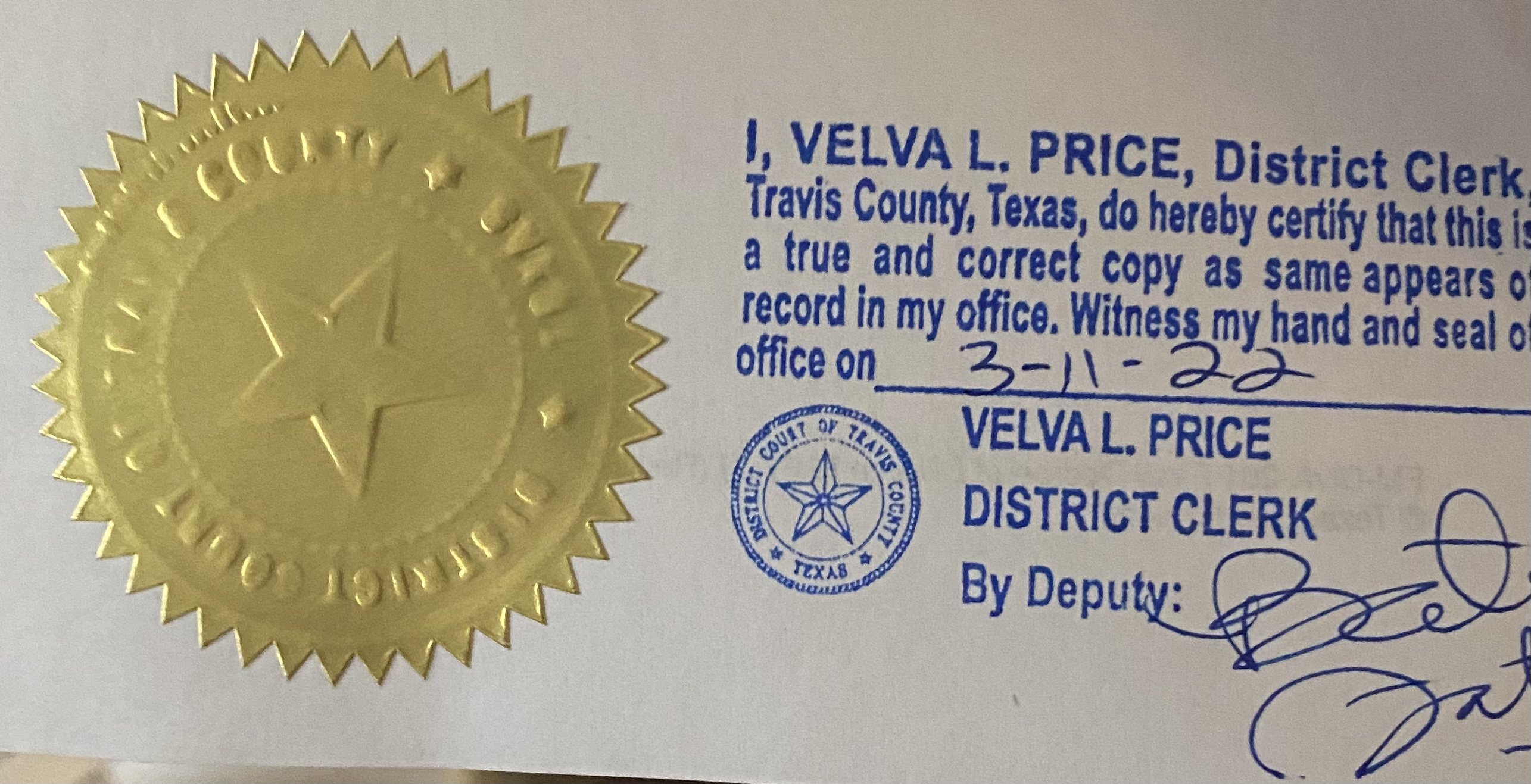What is the Legal Definition of Domestic Violence in Texas
Recently updated on June 7th, 2025 at 06:44 am
The legal definition of domestic violence in Texas is written in Texas Penal Code § 22.01 and the Texas Family Code § 71.004
For “Domestic violence” to have occurred there are two conditions that must be both be true
- Abuse must have occurred
- The relationship between the victim and the abuser is one of the qualifying relationships
It’s important to know the definition of Domestic Violence for various reasons particularly to identify the pieces of evidence are important and prove that domestic violence occurred in a legal case.
Abuse
- Physical Abuse: Causing bodily injury or physical harm intentionally, knowingly, or recklessly. Examples: hitting, punching, slapping, choking, or restraining someone.
- Threats of Violence: Threatening another person in a way that causes a reasonable fear of imminent physical harm.No physical contact is necessary if the threat is credible and immediate.
- Sexual Abuse: Any form of sexual assault, coercion, or unwanted sexual contact against a family or household member.
- Emotional or Psychological Abuse (limited in legal scope): Acts that lead to control or manipulation but may not qualify for legal action unless accompanied by physical harm or threats.
- Relationships Covered: Under the Texas Family Code (§ 71.003-71.006), domestic violence involves:
- Family Members: Blood relatives, spouses, former spouses, or individuals with shared children. Household Members: Individuals living together in the same residence, including roommates.
- Dating Partners: Violence in romantic or intimate relationships is addressed under “dating violence” statutes.
- Additional Legal Protections: Texas also considers stalking and harassment as forms of abuse when directed at a family or household member.
Abuse is not limited to the actual infliction of physical injury or assault.
Qualifying Relationships
 1. Spouse: A spouse or former spouse such as husband or wife, registered domestic partners
1. Spouse: A spouse or former spouse such as husband or wife, registered domestic partners
 2. Household members: People who live together or have lived together in the same home, regardless of family ties.
2. Household members: People who live together or have lived together in the same home, regardless of family ties.
 3. Past or Current Romantic Relationship: A person with whom the respondent is having or has had a dating or engagement relationship.
3. Past or Current Romantic Relationship: A person with whom the respondent is having or has had a dating or engagement relationship.
 4. Coparent: A person with whom the respondent has had a child
4. Coparent: A person with whom the respondent has had a child
 5. Family members: Any other person related by blood, marriage or adoption. This includes: Children, Parents, Brother or Sister, half-brother or Sister, step-brother or sister;, grandparents, niece, nephew, uncle, and aunt
5. Family members: Any other person related by blood, marriage or adoption. This includes: Children, Parents, Brother or Sister, half-brother or Sister, step-brother or sister;, grandparents, niece, nephew, uncle, and aunt
Importance of the Definition
The definition of domestic violence is important for several reasons, as it serves as a foundation for legal, social, and intervention efforts aimed at addressing and preventing abuse within intimate relationships. Here are some key reasons why the definition of domestic violence is important:
- Legal Framework:
- Identification and Prosecution: A clear definition helps in identifying instances of domestic violence and provides a legal basis for prosecuting offenders. It allows legal systems to distinguish between acceptable behavior and those that qualify for restraining orders and/or criminal conduct within the context of intimate relationships.
- Public Awareness and Education:
- Prevention and Intervention: Having a comprehensive definition aids in educating the public about the various forms of domestic violence. This awareness is crucial for prevention efforts and ensures that individuals, communities, and institutions can recognize and respond to abusive behaviors.
- Support for Victims:
- Access to Resources: A clear definition ensures that victims can access support services, shelters, counseling, and legal assistance. It empowers individuals to seek help and reinforces the idea that they are not alone in facing abuse.
- Research and Data Collection:
- Understanding the Scope: Researchers rely on a standardized definition to study the prevalence, causes, and consequences of domestic violence. Consistent definitions help in collecting accurate and comparable data, leading to a better understanding of the issue.
- Policy Development:
- Informed Policies: Policymakers use a clear definition to develop effective laws and policies that address domestic violence. This includes measures related to prevention, intervention, victim support, and offender accountability.
- Multidisciplinary Collaboration:
- Coordination Among Agencies: Professionals from various fields, such as law enforcement, healthcare, social work, and counseling, collaborate to address domestic violence. A shared definition ensures consistent communication and coordinated efforts among these agencies.
- Accountability and Justice:
- Perpetrator Accountability: A well-defined concept of domestic violence helps establish accountability for perpetrators. It emphasizes that abusive behavior within intimate relationships is not tolerated and is subject to legal consequences.
- Cultural and Social Change:
- Changing Attitudes: A clear definition challenges societal norms that may tolerate or condone abusive behavior. It contributes to cultural shifts by promoting healthy, respectful relationships and challenging harmful stereotypes.
In summary, the definition of domestic violence is key for addressing this pervasive issue at various levels, from legal systems and support services to public awareness and cultural attitudes. It plays a crucial role in fostering a society where intimate relationships are characterized by respect, safety, and equality.
Restraining Order as a solution for Domestic Violence
Ann.Cal.Fam.Code §§ 6203; 6320(a), (c)
(a) The court may issue an ex parte order enjoining a party from molesting, attacking, striking, stalking, threatening, sexually assaulting, battering, credibly impersonating as described in Section 528.5 of the Penal Code, falsely personating as described in Section 529 of the Penal Code, harassing, telephoning, including, but not limited to, making annoying telephone calls as described in Section 653m of the Penal Code, destroying personal property, contacting, either directly or indirectly, by mail or otherwise, coming within a specified distance of, or disturbing the peace of the other party, and, in the discretion of the court, on a showing of good cause, of other named family or household members.
(b) On a showing of good cause, the court may include in a protective order a grant to the petitioner of the exclusive care, possession, or control of any animal owned, possessed, leased, kept, or held by either the petitioner or the respondent or a minor child residing in the residence or household of either the petitioner or the respondent. The court may order the respondent to stay away from the animal and forbid the respondent from taking, transferring, encumbering, concealing, molesting, attacking, striking, threatening, harming, or otherwise disposing of the animal.
(c) As used in this subdivision (a), “disturbing the peace of the other party” refers to conduct that, based on the totality of the circumstances, destroys the mental or emotional calm of the other party. This conduct may be committed directly or indirectly, including through the use of a third party, and by any method or through any means including, but not limited to, telephone, online accounts, text messages, internet-connected devices, or other electronic technologies. This conduct includes, but is not limited to, coercive control, which is a pattern of behavior that in purpose or effect unreasonably interferes with a person’s free will and personal liberty. Examples of coercive control include, but are not limited to, unreasonably engaging in any of the following:
- Isolating the other party from friends, relatives, or other sources of support.
- Depriving the other party of basic necessities.
- Controlling, regulating, or monitoring the other party’s movements, communications, daily behavior, finances, economic resources, or access to services.
- Compelling the other party by force, threat of force, or intimidation, including threats based on actual or suspected immigration status, to engage in conduct from which the other party has a right to abstain or to abstain from conduct in which the other party has a right to engage.
- Engaging in reproductive coercion, which consists of control over the reproductive autonomy of another through force, threat of force, or intimidation, and may include, but is not limited to, unreasonably pressuring the other party to become pregnant, deliberately interfering with contraception use or access to reproductive health information, or using coercive tactics to control, or attempt to control, pregnancy outcomes.
(d) This section does not limit any remedies available under this act or any other provision of law.
Steps: How do I file a restraining order online
Step 1: Select the type of restraining order and gather evidence
There are a few different types of restraining orders and typically only one of them may apply to your situation so it’s important to select the correct one.
 Family Violence Protective Order is for harassment, excessive texting, stalking, verbally abusing, controlling behavior, blackmailing or causing fear when the abuser is your current or former husband/wife, or a romantic partner, or a coparent, or a family member (not roommate). For a complete overview of what is domestic violence please review: What is the legal definition of Domestic Violence in Texas
Family Violence Protective Order is for harassment, excessive texting, stalking, verbally abusing, controlling behavior, blackmailing or causing fear when the abuser is your current or former husband/wife, or a romantic partner, or a coparent, or a family member (not roommate). For a complete overview of what is domestic violence please review: What is the legal definition of Domestic Violence in Texas
 Sexual Assault Protective Order A Sexual Assault Protective Order is designed to protect individuals who have experienced sexual assault or abuse from further harm or contact by the abuser. (Texas Family Code, Chapter 85)
Sexual Assault Protective Order A Sexual Assault Protective Order is designed to protect individuals who have experienced sexual assault or abuse from further harm or contact by the abuser. (Texas Family Code, Chapter 85)
Gather Evidence (You can upload it online)
The first step is to gather the evidence to support your case. What proof do you need for a restraining order (formally called Family Violence Protective Order) in Texas. The following are examples to help you organize though anything that supports your claims can be used.

Criminal Case
A criminal case in progress shows that the district attorney also found evidence of the abuse or crimes and therefore supports your claims.

Photos
Photos of violence, injuries, damage
Messages
Print outs of messages, emails or transcripts of voicemail

911 Calls
For each call document the #, date, time, caller, callee details

Medical Records
Documentation of any medical emergencies or injuries or treatments resulting from abuser’s violence.

Police Report
Police reports filed against abuser for domestic violence.

Testimony
A testimony from a witness who can be a family member, neighbor a co-worker or a bystander, either in writing or in person at the hearing, describing the incidents witnessed.
Step 2: Fill the Official Court Forms
You can fill these online for free.
Create DVPO Forms Online
In order to apply for a protective order, you need to fill and submit a specific set of official Texas court forms. These have questions aimed at understanding your situation and the people involved.
Step 3: File with the Court
In Texas, you can file for a Domestic Violence Protective Order at the following locations:
- District or County Court Clerk’s Office: Protective orders are typically filed in the district or county court where either the victim or the alleged abuser resides or where the abuse occurred.
- Family Law Courts: Many Texas counties have specific family law courts that handle protective orders.
- Justice of the Peace Courts: For emergency protective orders, you may be directed to file at the Justice of the Peace Court.
- Local Domestic Violence Advocates or Legal Aid: Many counties in Texas have organizations that provide assistance with completing and filing protective order paperwork. These organizations often file on behalf of the petitioner in partnership with the court.
- Magistrate’s Office: In cases where an Emergency Protective Order is sought after an arrest, this can often be handled through the magistrate’s office as part of the criminal proceedings.
To determine the exact filing location in your county, visit the courthouse website or contact the clerk’s office directly. You can also refer to resources such as the Texas Advocacy Project or TexasLawHelp.org for additional guidance
Identify the methods of Filing
Method # 1: In Person by visiting the court house
Your court location would accept the forms to be submitted in person at the court hours.
![]() Tip: All courts have lunch hours when they are closed for an hour
Tip: All courts have lunch hours when they are closed for an hour
When you submit your case documents at the court, typically you take 3 copies.
The clerks reviews it, and if everything is ok, they formally enter it into the court system and put a stamp near the top of the documents. That acceptance is called filing.
The stamp may look something like this:

Method # 2: E-file online
This is the most efficient option if you have an e-mail address and some basic computer skills like registering an account, and uploading PDF files.
Some counties now have one or more online portals where you create an account for free, and then you can upload documents and hit submit.
You will be required to some online service fees.
Method # 3: Via another person
Some counties accept filing via a friend or legal courier. These companies or individuals charge a flat or hourly fee and file the documents at the court.
Step 4: Judge Sets Hearing, Grant/Deny Temporary Restraining Order (TRO)
A judge reviews the case offline and then you will be notified by the court about the outcomes which are:
- Temporary Restraining Order Granted
- Temporary Restraining Order Denied
In addition the Judge would typically set a hearing. If the case doesn’t have sufficient evidence it might be dismissed without even a hearing.
The temporary order (if issued) is valid until the hearing i.e. typically about 3 weeks. If the hearing is delayed for any reason, you need to check with the court to ensure the temporary order is renewed until the hearing to provide you with legal protection.
Step 5: Serve a set of Stamped Case Forms including Hearing Notice to Abuser
Whenever one party initiates a restraining order it needs to inform or serve the other party formally by delivering the court documents. That step is called serving the respondent
Under the Texas law there are multiple ways in which the other party can be served.
![]() You cannot serve your papers yourself.
You cannot serve your papers yourself.
Option 1: Ask the Sheriff (FREE)
 A sheriff or marshal can serve the opposing party for you which is a big help. This service is offered for FREE. To ask the sheriff to serve your papers, you must have an address or location for the other side (restrained person). If the other side is in jail, the sheriff can serve them. If the other side is in prison in Texas, prison staff, not the sheriff, will serve your papers.
A sheriff or marshal can serve the opposing party for you which is a big help. This service is offered for FREE. To ask the sheriff to serve your papers, you must have an address or location for the other side (restrained person). If the other side is in jail, the sheriff can serve them. If the other side is in prison in Texas, prison staff, not the sheriff, will serve your papers.
Option 2: Ask a friend, relative or any adult (FREE)
 You ask someone you know to be your server
You ask someone you know to be your server
- 18 or over, and
- not part of your case
Think about safety when choosing your server. Get step-by-step instructions for how to have someone else, not the sheriff, serve your court papers.
Option 3: Hire a courier for legal papers (Process Server)
 You can also hire a courier called professional process server. You can search on Yelp or Google to get a list of options near you. Yelp Example . An example is ABC Legal Services.
You can also hire a courier called professional process server. You can search on Yelp or Google to get a list of options near you. Yelp Example . An example is ABC Legal Services.
You cannot hire regular couriers such as UPS, FedEx or US Postal Service unless in exceptional scenarios where the judge authorizes service by mail, but that’s a whole different topic altogether.
Step 6: Present Evidence in a Court Hearing

Attend a hearing: The court holds a hearing within a couple of weeks where the evidence is examined. If there is sufficient supporting evidence as determined by a Judge, a full restraining order is issued. At this point it becomes a crime for the abuser to break the conditions of the restraining order.
Step 7. Collect the Final Order
After the hearing, a final order may be issued. You can take a paper copy of the order with you. The order is typically valid for five years.
Costs – How much does it cost to get a Restraining Order
The cost depends on the type of restraining order.
Domestic Violence Protective Order
- FREE forms : You can get the court forms for free, or prepare them using the guided experience below.
- FREE filing: There is no fees for filing. Online filing platforms may charge a E-filing fees
- FREE Serving the other party
How long does it take to get the Domestic Violence Protective Order
You can get a temporary protection order the same day as you file.
Courts can have a cutoff of around 2 p.m. for the same day service, so you need to file before then. Otherwise, the order would be issued the following day when courts open.
Courts are generally open Monday-Friday and closed on Saturday-Sunday.
The temporary order is valid until a formal hearing is held in which both parties need to be present. Typically a hearing is scheduled in 2 weeks of filing.
At the hearing a formal order may be issued
Is a protective (restraining) order helpful?
The purpose of a restraining order is to restrict the contact or proximity of one person (the respondent or alleged perpetrator) to another person (the petitioner or victim) in order to ensure the safety and well-being of the petitioner.
The specific terms of a restraining order can vary depending on the circumstances of the case e.g. if the people live together then it might require one party to vacate the place.
Typically, a restraining order may prohibit the respondent from
- Approaching or contacting the petitioner including via text or social media
- Staying away from the usual places petitioner is at such as home, work or school
- Prohibit stalking, or surveillance of any kind
- In situations where they lived together, provide custody or access to
- Children
- Pets
- Important documents
- Personal items such as clothes, medications, cell phones
- Cars
- Extending the protections to others living with the petitioner
Research findings on benefits of restraining orders
Here’s the top three findings from a study on domestic violence and restraining orders from the University of New Hampshire
 Reduce Violence
Reduce Violence
Civil protective orders (such as a DVRO) are effective in reducing partner violence for many women. For half the women in the sample, a protective order stopped the violence. For the other half, the orders significantly reduced violence and abuse.
Cost Effective
They are a relatively low-cost solution, particularly when compared with the social and personal costs of partner violence.
Urban Vs. Rural
The impact of civil protective orders on reducing violence and abuse did not differ for rural and urban women. In rural areas where resources and services for partner violence may be more limited, the restraining orders hold greater importance.
What Restraints can I ask when I file for a Domestic Violence Protective Order
Here are the typical restrictions places on the abuser via the restraining order.

Stay Away From You
Abuser would have to stay at least 100 yards away from you, your children and locations you request such as your work

Not To Contact You
Not to contact you via phone or text or mutual friends

Not Stalk You
Not stalk you or your loved ones, including your accounts on facebook or other social media

Hand Over A Car
Get access to cars held by the abuser

Vacate The Shared Residence
The respondent can be asked to vacate the shared residence. You can also request help from police to kick them out.

Handover Passport, Cell Phone, Medications Etc.
You an ask for your personal items such as passport, medications, clothes. This would be applicable if you were living together up to now.

Don’t Post Intimate Images
Take down, delete, and do not distribute intimate images of a protected person

Restrict Abusive Litigation
This is to prevent the misuse of the legal system to harass, intimidate, or burden you.

Get Drugs, Mental Health And Sex Offender Treatment
You can request the abuser to seek treatment for alcoholism, drug use, domestic violence abuse
Risks of a getting a Domestic Violence Protective Order
It is conceivable that following the submission of a civil protection order, the abuser particularly in domestic violence situations may react with anger due to the perceived loss of control over you and your household. In certain instances, the abuser may portray themselves as the victim and shift blame onto the actual victim they were mistreating.
The response of your abuser after the filing of a protection order is unpredictable. While a Domestic Violence Protective Order (DVPO) can provide legal protection, one should not automatically assume that it guarantees safety. The initial weeks post-filing can be particularly precarious, contingent on your abuser’s reaction.
Despite the safeguards intended by a DVPO, abusers may retaliate through various means, such as:
- Physical assault or violence
- Harming or taking away children
- Damaging jointly owned property
- Disregarding the order and persisting with threats, possibly through intermediaries
- Inflicting harm or causing harm to pets
- Harassing your loved ones for information
- Engaging in stalking behavior
- Initiating a retaliatory restraining order against you
- Spreading false information about you in court documents, online, or publicly
Following the submission of a domestic violence Protection order, it’s important to continuously assess your situation and prepare for the potential escalation of your case into more violent territory.
Related Posts
Can I Appeal A Small Claims Judgment Illinois
Overview In Illinois, every party in a small claims case—plaintiff or defendant—has the right to appeal a judgment entered by a circuit-court judge. Although the small claims division is designed for speed and informality, its decisions are legally binding. If you believe the judge misapplied the law, ignored important evidence, or reached a conclusion unsupported…
Illinois Small Claims court Process Self Represented
Overview The Illinois Small Claims Court is designed for speed, simplicity, and self-representation. It handles civil disputes involving $10,000 or less, excluding interest and court costs. The process is structured to be accessible to citizens without lawyers—what Illinois courts call “pro se” litigants. By providing standardized forms, plain-language instructions, and flexible scheduling, the small-claims system…
Illinois mall Claims Court Forms Fees
Overview The Illinois Small Claims Court provides an efficient and affordable way for individuals and small businesses to resolve monetary disputes of $10,000 or less. Designed for self-represented litigants (pro se), the system simplifies traditional civil procedures through standardized forms, limited motion practice, and straightforward evidence rules. Every county follows uniform requirements based on Illinois…
What Qualifies For Small Claims Court Illinois
Overview The Illinois Small Claims Court exists to resolve civil disputes involving money claims of $10,000 or less. It provides a simple, fast, and affordable way for people to pursue justice without needing an attorney. The rules are governed by Illinois Supreme Court Rules 281–289, which simplify filing requirements, remove most formal discovery, and encourage…






 Stalking Protective Order: tells an abuser to stop contacting you and members of your immediate family and household. It offers protection against repeated harassment, threats, or unwanted contact. It’s for situations where an individual feels threatened or in danger due to persistent stalking behavior. (Texas Family Code, Chapter 85)
Stalking Protective Order: tells an abuser to stop contacting you and members of your immediate family and household. It offers protection against repeated harassment, threats, or unwanted contact. It’s for situations where an individual feels threatened or in danger due to persistent stalking behavior. (Texas Family Code, Chapter 85)




